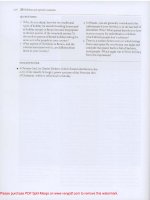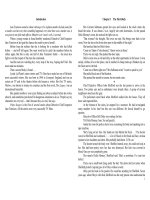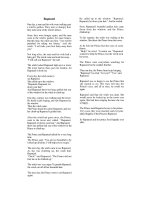Tài liệu BDL-11-Time (1593394268) doc
Bạn đang xem bản rút gọn của tài liệu. Xem và tải ngay bản đầy đủ của tài liệu tại đây (1.64 MB, 20 trang )
About the pagination of this eBook
Due to the unique page numbering scheme of this book, the
electronic pagination of the eBook does not match the pagination
of the printed version. To navigate the text, please use the
electronic Table of Contents that appears alongside the eBook or
the Search function.
For citation purposes, use the page numbers that appear in the text.
In this book, you will:
learn about telling time.
discover new words.
answer fun questions.
play a time-telling game.
find more time activities at the back of the book.
12
1
2
4
5
7
8
10
11
6
9
3
11
11
C
HICAGO
L
ONDON
N
EW
D
ELHI
P
ARIS
S
EOUL
S
YDNEY
T
AIPEI
T
OKYO
T
I
M
E
BRITANNICA
LIBRARY
D
I
S
C
O
V
E
R
Y
12
1
2
4
5
7
8
10
11
6
9
3
12
1
2
4
5
7
8
10
11
6
9
3
12
1
2
4
5
7
8
10
11
6
9
3
12
1
2
4
5
7
8
10
11
6
9
3
12
1
2
4
5
7
8
10
11
6
9
3
12
1
2
4
5
7
8
10
11
6
9
3
12
1
2
4
5
7
8
10
11
6
9
3
12
1
2
4
5
7
8
10
11
6
9
3
2
3
There is time for so many things in a day!
The sun rises.
Time to get dressed!
Breakfast time
Nap time
Playtime
At the end of the day,
the sun goes down. Bedtime!
Dinnertime
Time to go.
Lunchtime
What are
some
important
times in
your day?
5
Long shadows across the ground tell
us it is late afternoon.
4
We have many ways of telling what time it is.
When
the sun is
highest in the
sky, we know it
is noon.
Early in the
morning, birds
chirp and sing.
Roosters crow.
These sounds
tell us dawn
has come.
How did you
know it was
daytime
when you
woke up
today?
What things
do you see
that tell
you it is
afternoon?
One night you can look up in the sky and see the moon,
bright and full. As the nights go by, the moon seems
to grow smaller. After many nights, you cannot see it at
all. Then it grows full again. This is another way we know
time is passing.
The time between two full moons is about four weeks.
7
6
We know it is nighttime
when the sun goes down
and the stars come out.
Did you see
the moon last
night? What
did it look
like?
How did you
know it was
time to go to
bed last
night?
9
In some villages, people gathered together when they heard
the sound of beating drums. The drums meant it was time
for an important meeting.
8
Long ago, people had many different ways of telling time.
In some parts of the world, people rang bells in the
morning. This told everyone it was time to go to work.
10
This is a sundial.
The sundial was one of
the first ways of telling time.
When the sun shines down
on the sundial, the tall
part of the sundial makes
a shadow on the flat part.
11
As time passes, the sun moves across the sky.
The shadow moves around the flat part of the sundial
as the sun moves in the sky. By looking at where the
shadow is, we know what time it is.









